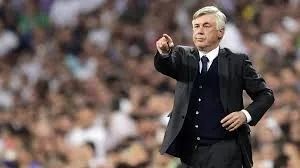"Quiet Leadership" by Scott Davies

Originally published by Scott Davies, on his substack Liminal Theories
Some thoughts on the guide to subtle, understated leadership from the elite football manager Carlo Ancelotti
Leadership is among the most popular topics to talk about whenever business and self-development is mentioned. There are countless books on the subject, covering leadership from every conceivable angle. What, then, does ‘Quiet Leadership’, the one-part autobiography and one-part discourse on leadership, have to offer on such a crowded subject? The answer is a surprising amount. The standout feature of this book relative to others in its genre is the depth of thought Ancelotti has given the subject. It is clear from the outset he is not just a student of the game of football, but of a wide variety of disciplines, including psychology, commerce, management, philosophy, and many other fields. This depth of knowledge is reflected in his ability to manage a wide variety of scenarios in a flexible manner while still retaining his core person and ethos throughout.
The book is split into three overarching themes, ‘The Leadership Arc, ‘The Core Business’, and ‘Learning to Lead’. Each section weaves personal narrative with an aspect of leadership. In the first section of the book, Carlo runs through his career to date first as a highly successful player and then plying his trade. He first starts out as first an assistant manager, then progresses as a first-team manager making his way up the football pyramid in Italy, followed by taking the reins at some of the most prestigious clubs in Europe, including Real Madrid, Chelsea, Paris-Saint Germain and Bayern Munich. At each club, he gains valuable experience through his successes and especially his failures on how to manage players and people, their personalities and the various challenges that arise.
‘The Core Business’ gives readers an insight into the many competing priorities a top-level football manager must contend with aside from managing a team of players. From demanding club Presidents to media and commercial obligations, a manager in the modern-day footballing context must be able to handle all these aspects. At a surface level, most readers would be aware of these challenges faced by modern coaches. However, Ancelotti provides some valuable context into just how challenging managing at the biggest clubs can be. In particular, this section shows just how much is either only indirectly or not at all controllable by even the most respected of modern coaches. In many ways, the elite clubs in football are reminiscent of a large, Fortune 500-tier corporation, even down to the labyrinth chain of command and internal bureaucracy. Despite this, Ancelotti provides invaluable advice for succeeding and thriving in such circumstances. For Ancelotti, this always returns to a focus on the people – whether the players, other coaches, directors and club executives, and any other staff. From his perspective, a leader is only as good as the staff around them, the mentality that they instilled and the drive to win. Even without direct control, a leader is still ultimately responsible. The buck always stops with a leader, from Ancelotti’s perspective.
Finally, ‘Learning to Lead’ gets to the specifics of how to learn leadership. Whilst written in the context of being a football manager, these principles can be applied into any walk of life. This section consists of two chapters – growing, and values. The section on growing is how to learn how to be a leader. Unsurprisingly, a practical, hands-on approach is emphasized here. Ivory-tower leadership will not suffice, especially for any kind of people-centred leadership.
Throughout the book, there are several profiles of Ancelotti through the perspective of various elite players he has coached, including Cristiano Ronaldo, Zlatan Ibrahimovic and David Beckham. Whilst each player was at a different club at the time they were coached by Ancelotti, a number of things are consistent. Firstly, Ancelotti has a notably people-centred approach, with the development of those around him being core to his managerial practice. This extends beyond the training pitch, and helps create a familial atmosphere at each club he coaches. Secondly, his approach is not a dictatorial one – he trusts his players to be professional and to make the correct decisions. There is of course a level of structure implemented, but he allows a level of freedom for his players which is somewhat unusual at the upper echelons of management. This is reflected in the style of his teams – not beholden to a specific system or formation, his teams are adaptable and can adapt to any number of different situations within a game. Unsurprisingly, his lists of honours spreads a breadth of clubs matched by few others, and none at as high a level as Ancelotti has done it.
While the points Ancelotti makes throughout Quiet Leadership are hardly revolutionary, the way in which he makes them, and the sheer weight of experience and verifiable proof behind them make this a valuable read nonetheless. For anyone who is interested in the topic of leadership, particularly those who may not have the traditional leadership personality style, Quiet Leadership is well worth the read.
